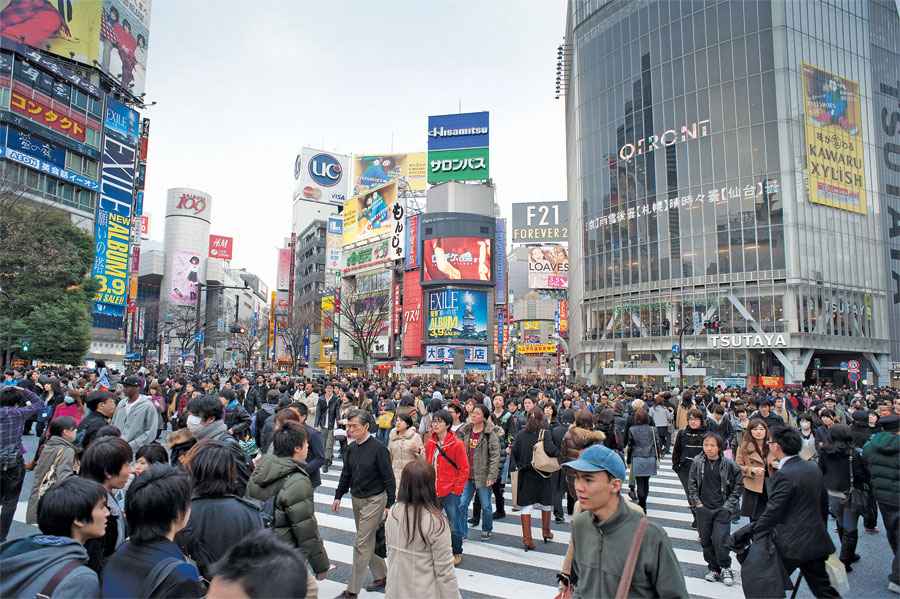Tokyo is the world’s hottest city for retail expansion attracting 63 new retail brands despite mixed signals of the economy and an increase in sales tax of 8% in April 2014, according to the recently released report by CBRE, the global property advisor.

With the effects of ‘Abenomics’, the commonly used term for economic growth strategy implemented by Prime Minister Abe’s Cabinet, the year 2014 turned out to be dramatic for the Japanese macro-economic environment with VAT increasing from 5% to 8% in April followed by a weak Japanese Yen exchange rates. In the new scenario, the wealthy consumers benefited the most from Abenomics as the gap in disposable incomes widened amongst Japanese consumers. This has resulted in further polarisation of consumer preferences as the premium consumers are willing to pay extra for higher quality, while those with decreasing real net income remain cost-conscious. “The core elements of globalization, technology and demographic change, continues to have a dramatic impact on the retail business. Demographic shifts in many countries have resulted in changes in both spending power and shopping habits. Technology enables retailers to enter markets and evaluate performance more swiftly,” informs Brandon Famous, Senior Managing Director, Retail Occupier Advisory & Transaction Services, CBRE.
The report mentions that US retailers accounted for 26% of cross border expansion and the primary target of expansion are Asia (41%), Europe (33%) and the Middle East and Africa (12%). Among the most active retail sectors globally, Mid-Range Fashion retailers lead the field, accounting for 21% of global expansion, followed by Luxury & Business retailers with 20%, and Coffee & Restaurant and Specialist Clothing, each with 16%. “Consumers continue to view the physical store as their preferred mode of purchase and perhaps more importantly, as a point of social interaction. They view shopping as a leisure activity and the continued expansion of brands and the development/improvement of shopping locations gives them the opportunity to embrace this,” reveals Brandon.
Amongst the major boost for Japanese retail market in 2014 was the influx of tourists. Many tourists visited Japan as a shopping destination to purchase not only Japanese products but also imported products, which are now often cheaper in Japan than in their home countries. In response to this dramatic expansion, many retailers shifted their sales strategies to focus more on the tourists. This trend is likely to continue, as the Japanese Government aims to achieve the ambitious target of 20 million foreign visitors per year by 2020, the year when Tokyo will host the Olympics.
Further, 2014 witnessed large acquisition cases as the number of mergers & acquisitions increased since 2010, including Aeon Group’s acquisition of mass merchandiser Daiei and I Holdings’ acquisition of home-shopping operator Nissen. Also, retail real estate at Ginza continues to attract new retailers as availability tightens in the area. Home to who’s who of international brands, Ginza is Tokyo’s oldest and most prestigious department store, including luxury and fast fashion retailers such as Adidas, Alfred Dunhill, Armani, Barney’s New York, Brooks Brothers, Burberry, Bvlgari, Cartier, Chanel, Coach, Dior, Furla, Gucci, Hermes, Louis Vuitton, Mont Blanc, Prada, Salvatore Ferragamo, Tiffany & Co, UNIQLO, ZARA, etc.
Meanwhile, the ever-growing influence of the internet on retail sales continues to fuel the online retail market. Despite having one of the world’s highest internet penetration rates, only a fraction of retail sales are actually transacted online in Japan, but this is set to change as online shopping evolves from a sporadic activity to something more habitual. Already, traditional brick-and-mortar retailers are expanding their logistic real estate footprint to accommodate growing online sales, while e-commerce players such as Amazon and Rakuten are also aggressively developing their foothold in the market.
With a GDP of US $ 14.8 trillion and home to 47 ‘Fortune Global 500’ companies. Retail remains the central focus in the continuing recovery and rebirth of Tokyo’s economic power as locations such as Ginza (which regularly sees rental prices more than US $ 1,000 per sq.foot), Omotesando and Shibuya still rank among the most desirable and leading retail locations in the world. Though competition continues to bloom as China bustles with new retail investment opportunities and a growing hunger for luxury brands, but for now, Tokyo remains the world’s leading consumer of luxury goods.

Post a Comment